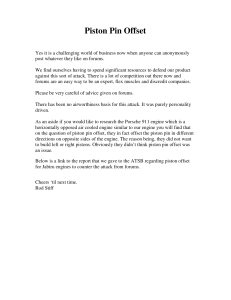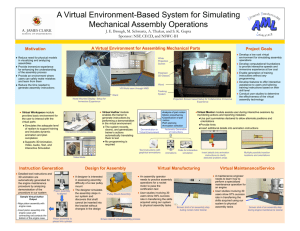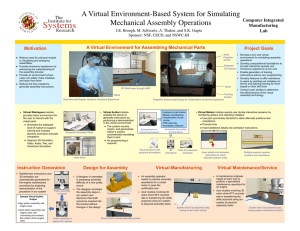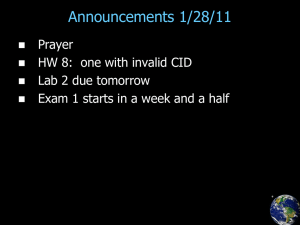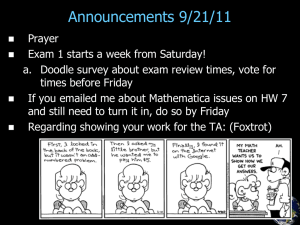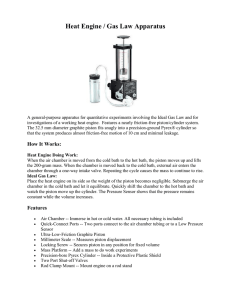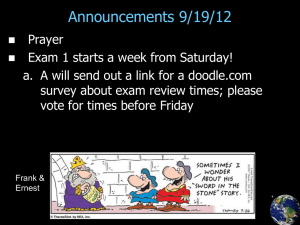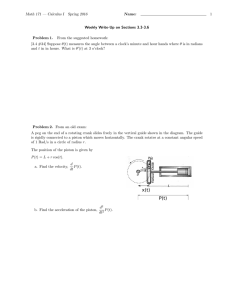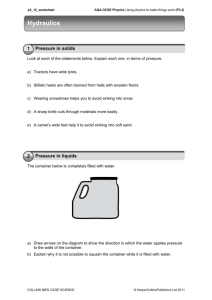AE-Module-2-Review
advertisement
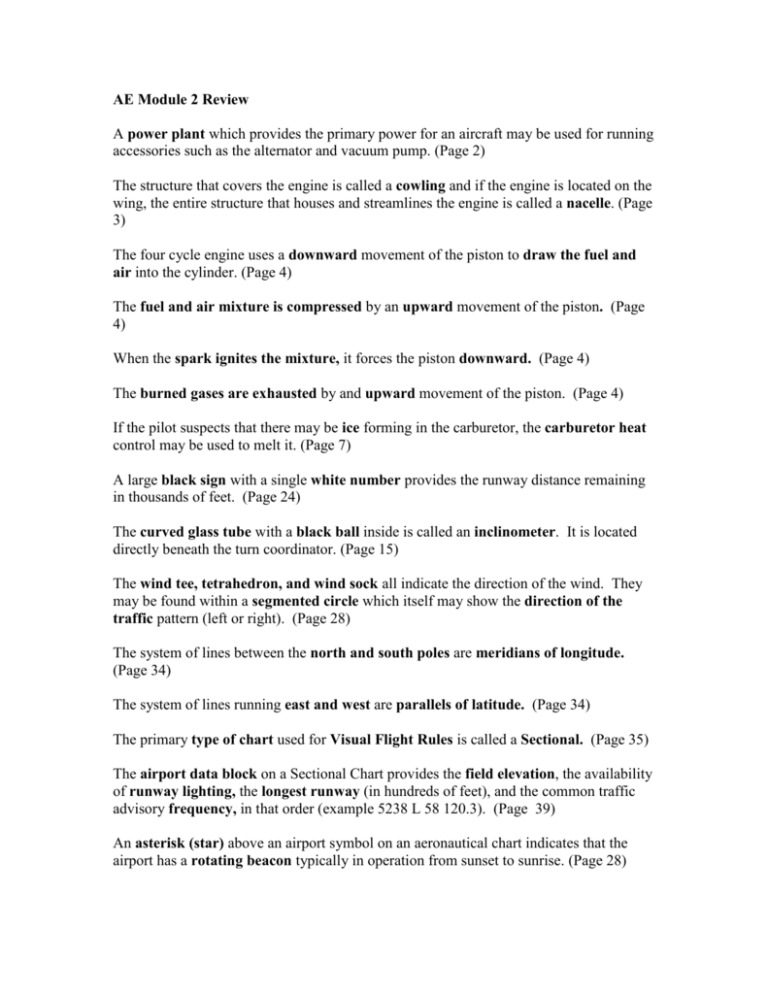
AE Module 2 Review A power plant which provides the primary power for an aircraft may be used for running accessories such as the alternator and vacuum pump. (Page 2) The structure that covers the engine is called a cowling and if the engine is located on the wing, the entire structure that houses and streamlines the engine is called a nacelle. (Page 3) The four cycle engine uses a downward movement of the piston to draw the fuel and air into the cylinder. (Page 4) The fuel and air mixture is compressed by an upward movement of the piston. (Page 4) When the spark ignites the mixture, it forces the piston downward. (Page 4) The burned gases are exhausted by and upward movement of the piston. (Page 4) If the pilot suspects that there may be ice forming in the carburetor, the carburetor heat control may be used to melt it. (Page 7) A large black sign with a single white number provides the runway distance remaining in thousands of feet. (Page 24) The curved glass tube with a black ball inside is called an inclinometer. It is located directly beneath the turn coordinator. (Page 15) The wind tee, tetrahedron, and wind sock all indicate the direction of the wind. They may be found within a segmented circle which itself may show the direction of the traffic pattern (left or right). (Page 28) The system of lines between the north and south poles are meridians of longitude. (Page 34) The system of lines running east and west are parallels of latitude. (Page 34) The primary type of chart used for Visual Flight Rules is called a Sectional. (Page 35) The airport data block on a Sectional Chart provides the field elevation, the availability of runway lighting, the longest runway (in hundreds of feet), and the common traffic advisory frequency, in that order (example 5238 L 58 120.3). (Page 39) An asterisk (star) above an airport symbol on an aeronautical chart indicates that the airport has a rotating beacon typically in operation from sunset to sunrise. (Page 28)

